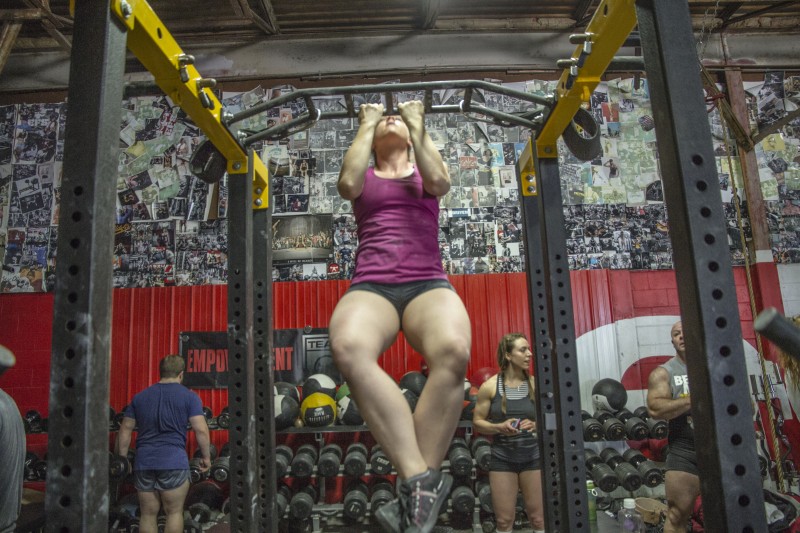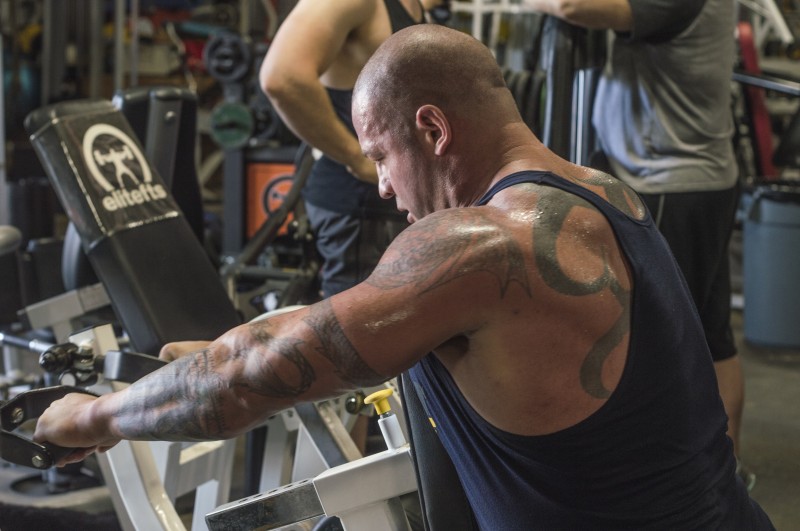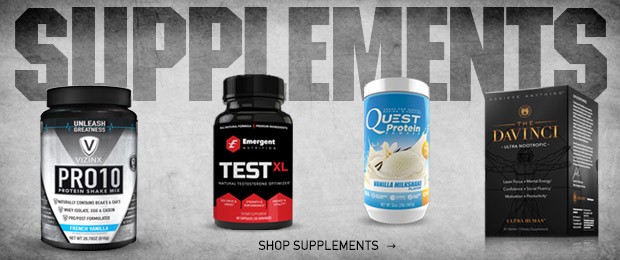
Lean gaining is the holy grail of bodybuilding. For most people, building muscle means getting fat in the process. Sure, you get stronger and you build a bunch of muscle, but once you lose the fat, you're back to where you started.
On top of this, you look like crap most of the year, just in the pursuit of muscle. It seems to me that most people recommend this approach because they don't know what the heck they're doing, and to them, it seems like it might work once in a blue moon. Sure, you are gaining muscle while you're bulking, but gaining all of that fat isn't worth it. You just end up looking like a bigger version of yourself.
Lean gaining, on the other hand, is the bee's knees. You look awesome year-round, and you're gaining muscle that you can maintain. In other words, you gain muscle without getting fat, and then you keep that muscle. I think we could all agree that this sure beats bulking up and getting fat, and then losing the fat and the muscle, only to be back to square one.
RECENT: How I Lost 30 Pounds in One Day: Secrets to Water Cuts for Strength Athletes
On paper, the approach is much simpler than you think. As long as you have the compliance to stick to the simple program, you'll get the results.
Step 1: Get Lean
You can't lean gain if you're already fat. It's as simple as that. I recommend dieting down to eight to 12% body fat. This is probably the hardest part of the process, but once you get there, it's all uphill.
I recommend starting with bodyweight x 12 = daily calories. If you're not losing one percent of your bodyweight per week, decrease daily calories by 200 every other week until you're losing the appropriate weight.
For example, if you're 200 pounds, start out by eating 2400 calories per day (200 x 12 = 2400). If you're not losing approximately two pounds per week (after two weeks), then drop the calories to 2200 calories per day. Re-evaluate every two weeks until you're losing the weight.

Calculating calories is all about measuring your progress and then adjusting from there. If it's working, don't change anything. Alternatively, if it's not working, you need to change it.
For protein, I recommend one gram per pound of bodyweight. So if you're 200 pounds, eat 200 grams of protein per day. Fill in the rest of your calories with carbs and fats.
Step 2: Build Muscle
In the gym, you need to do the following to build muscle:
- Train to failure occasionally (using intensity techniques such as drop sets, rest pauses, and partials).
- Train each muscle two to three times per week.
- Use compound movements 80% of the time.
- Use isolation exercises on lagging body parts.
- Do the most important exercises first.
- Rest two to three minutes between sets.
- Always try to get stronger in each and every lift (with perfect form).
For nutrition, you're going to eat in order to build muscle slowly. How slow? One to two pounds per month. Remember, the goal here isn't to blow up quickly; it's to build muscle and stay lean at the same time. This means taking your time. Those one to two pounds per month add up to 12 to 24 pounds of muscle over the course of a year.
This means you're going to need to eat enough calories to sustain muscle growth, but not enough calories to gain fat. Obviously, this cannot be 100% accomplished, but we can get pretty close as long as you’re following the training rules above and not overeating.
First, you'll need to determine your maintenance calories (the number of calories you need to eat per day in order to maintain your weight). Multiply your current bodyweight by 14-15 and that will be your maintenance calorie count. For example, if you are 200 pounds, you'll eat 2800-3000 calories per day to maintain your weight.
From here, I want you to add 250 calories to your maintenance level. This total is how many calories you'll eat per day. For example, if you are 200 pounds, you'll eat 3050-3250 calories per day (maintenance plus 250). This may not seem like a huge increase, but it's enough to build muscle slowly. When lean gaining, slow is the name of the game.
For protein, you can't beat one gram per pound of bodyweight. So if you're 200 pounds, you're going to be eating 200 grams of protein per day. Again, the rest of your calories will be spread across carbs and fats.
MORE: Low Carb Dieting Without the Suffering
Every two weeks, you'll need to monitor yourself. If you gained between half a pound and two pounds, you're gaining at a perfect rate. If you gained less than half of one pound, you'll need to increase your calories by 100-200 per day, and vice versa if you gained more than two pounds.
Step 3: Mini-Cut
I want you to continue using the approach in step two until you're at about 12-15% body fat. Usually, this means when your six-pack turns into a four-pack.
Once this happens, you'll need to do a mini-cut. Essentially, this means using the advice in Step 1 for four weeks. After four weeks of the mini-cut, you can go back to Step 2.
We use a mini-cut for a couple reasons. First of all, I've found it's easier to gain muscle when you are lean. Your body has an easier time storing excess calories as muscle instead of fat when you have a six-pack. Secondly, this is a lean gain approach, and you want to stay lean the entire process. This means using mini-cuts whenever you start to lose your leanness. This will ensure that you look great year-round.
Conclusion
Lean gaining is easy; you just need to be compliant with the plan. Get lean first, and then gain muscle slowly (one to two pounds per month). When your six-pack becomes a four-pack, it's time to do a four-week mini-cut. Cycle back and forth between slow muscle gaining and mini-cuts and you'll be a lean gaining machine.
Header image, Petr Joura © 123RF.com
Jason Maxwell, of JMax Fitness, is a rocket scientist turned fitness professional from Toronto, Ontario. He went from skinny-fat kid to ripped adult and it's his passion to help others do the same. He is the co-creator of popular programs such as The DUP Method and She Lifts. Get your free muscle-building guide at www.JMaxFitness.com.











While big weight changes should be supervised by a medical professional and no one article will ever be the definitive guide on this topic, I think it's important to state explicitly that it's very possible for strong, lean women to be over 20% body fat. At a minimum, it needs to be noted that single digit body fat is not step one for females.
I have been looking to change my diet lately to add some mass and your article was clear and concise! It even lines up with a published article from EBSCO about protein intake and calorie intake for lean mass gain!
check it out!
“NUTRITION.” Flex, vol. 28, no. 9, Nov. 2010, pp. 146–148. EBSCOhost, search.ebscohost.com/login.aspx?direct=true&db=hxh&AN=55335148&site=ehost-live.